Gwendolyn Yates Whittle and Chris Boyes surely liked the sound of what they heard on the morning of Jan. 24, when Riz Ahmed and Allison Williams announced that they — along with Julian Howarth, Dick Bernstein, Gary Summers, and Michael Hedges — were nominated for an Academy Award in the Best Sound category for their work on James Cameron‘s blockbuster sequel, Avatar: The Way of Water.
Though Whittle and Yates are no strangers to the Oscars, as she’s been nominated twice (for the original Avatar and Tron: Legacy) and he’s a four-time winner (Titanic, Pearl Harbor, King Kong, and The Lord of the Rings: The Return of the King) with another seven nominations to his name (including the original Avatar), it was still very much an honor for both of them.
Just days before the nominations announcement, Below the Line caught up with Yates Whittle and Boyes for a joint Zoom conversation, during which they discussed working with Cameron, the advances that have been made in sound technology since the first Avatar, and their respective upcoming projects. Tune in for more below:
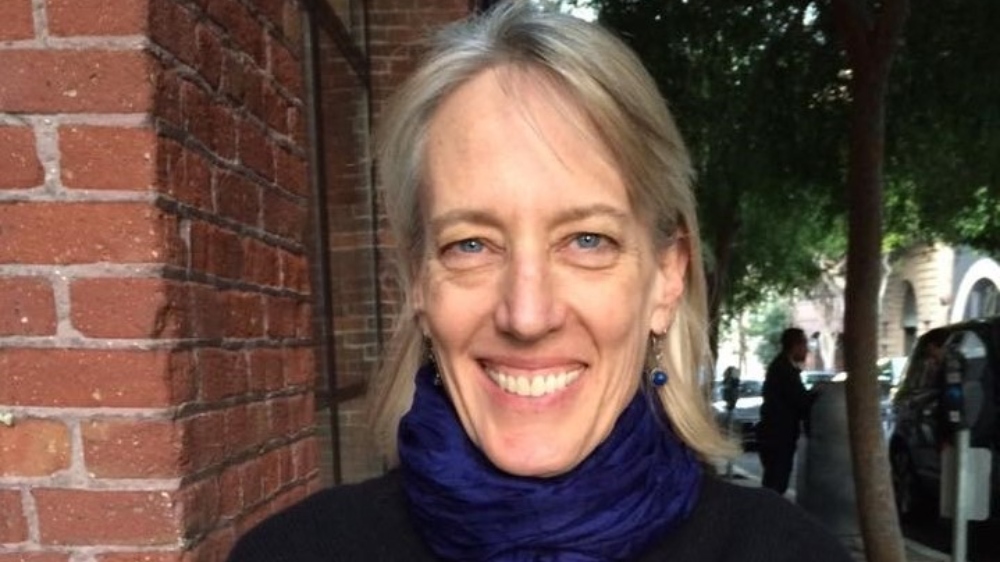
Below the Line: What has it been like to witness the critical and box office juggernaut that The Way of Water has become? Its global box office haul currently stands at $2.2 billion and counting…
Gwendolyn Yates Whittle: I remember when we were working on Titanic, we were like, ‘Everybody knows this ship sinks. Everybody knows the story. It’s not a fresh love story; it’s a poor guy, rich girl kind of thing.’ We were all pretty sure that the movie was going to tank and we were so wrong. We knew Avatar was going to be pretty amazing because we ourselves were blown away by how it looked. This one? We were on the fence about it. I know that Jim and Jon [Landau] were nervous about it. They put it out there, and we knew it would be successful. We just didn’t think it’d be successful so fast. We thought it would have been like how the first one and Titanic did, how they just kept staying. This one exploded in a good way, which is cool to see. It’s nice to see people appreciating all the artistry that went into it, not just Jim’s and Jon’s, but the visual effects, costume, and music people as well, plus our part in it. It’s heartening to see that people like it.
Christopher Boyes: I tried not to pay attention, because it’s a personality thing, but I’m always concerned that if the film doesn’t do well, somehow I didn’t do a good job on the sound. I had blinders over my eyes, and I kept asking, ‘Gwen are we doing okay?’ Gwen said, ‘Everybody loves it. It’s really doing well.’ I started to talk to people, regular people that didn’t have anything to do with the film and didn’t know anything about the film industry. Some of them would tell me how much they loved it, and that they were on their second screening. Some said, ‘I can’t wait to see it. I can’t get in.’ I started to think, ‘Okay. Well, now I’ll take a look.’ I’m very happy because it’s a pretty bold film. It’s visually exciting, an amazing ride, and very emotional. But you just never know. It’s also a very unconventional film, so I didn’t know if people were ready to return to Pandora and to the Na’vi people. I was so happy to find out that they are.
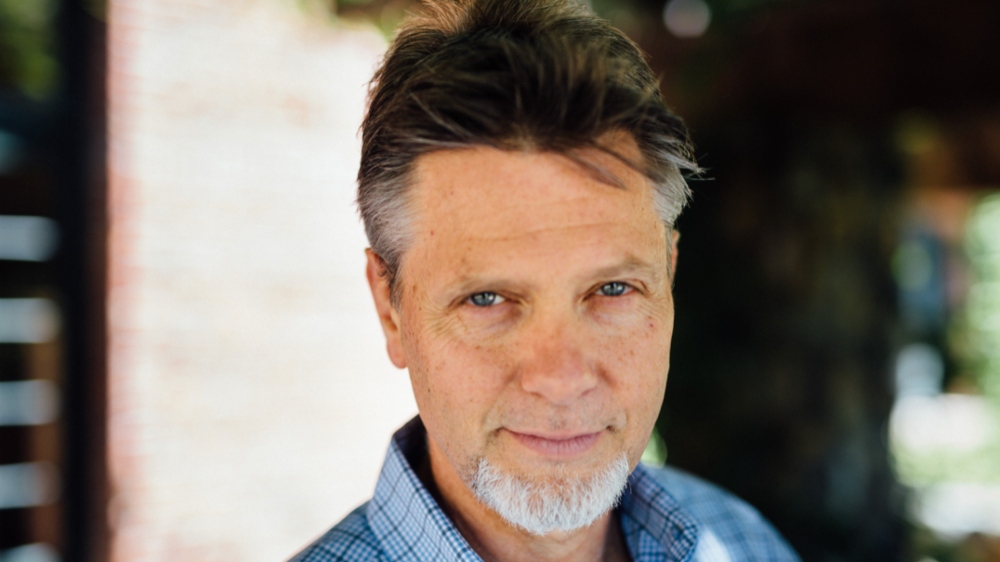
BTL: The lesson here is, never bet against James Cameron. How confident were you as the film was coming together — forget about the box office — that you were working on a special film?
Yates Whittle: How confident were we? Well, the visuals are astonishing. If you work on something that is that beautiful, your work also gets better. They support one another. That’s a very difficult question to answer because you’re so deep in it when you’re working on it, then all of a sudden you’re done and you’re like, ‘Okay, was that good? I don’t know. Let’s wait and see.’ A week after we were done, the box office opened and we were like, ‘Oh, I guess it is okay.’ It’s hard. It was just so intense.
Boyes: I would say that what we do is not necessarily frame by frame, but foot by foot, so it becomes a little bit harder for us to get the flow of the film. Then, of course, we’re not screening it with the best image or the best projection. Jon would say, ‘Hey, why don’t you guys go watch this scene downstairs in the theater in 3D?’ That’s [when] I started to realize, ‘Oh my god, it looks so much better! It’s so alive!’ In fact, when I saw the 3D, it made me want to make changes audio-wise, not things that came out of the screen more, but I wanted to change the balance of things against the music and the effects. At that point, I was like, ‘I don’t know if it’s going to be successful, but people are going to be pretty excited about what they’re seeing.’ I felt like the sound gave the visuals license in a way that you wouldn’t otherwise get if you were just watching without sound.
Yates Whittle: It grounds it in a reality that the audience can understand. It makes you believe, “Oh, of course, there are these blue people and these creatures. It makes total sense. Why would they not be there?”
BTL: So after Jim gets his script together and the studio gives him a green light, who calls you guys and says, “We’re getting the band back together? Do you want to do this with us?” Is it Jim? Is it Jon? Is it somebody else on the production team?
Yates Whittle: It depends on who you are. Jim probably called you, Chris… didn’t he?
Boyes: No, it’s all Jon.
Yates Whittle: Jon called Chris, and then Chris called me. Then it went from there.
Boyes: Jon runs the show. Jim is a man whose time is parsed out in minutes. I wish he would call me more often and talk about sound, but he’s got so many balls in the air that sometimes sound gets the last look, in a way.
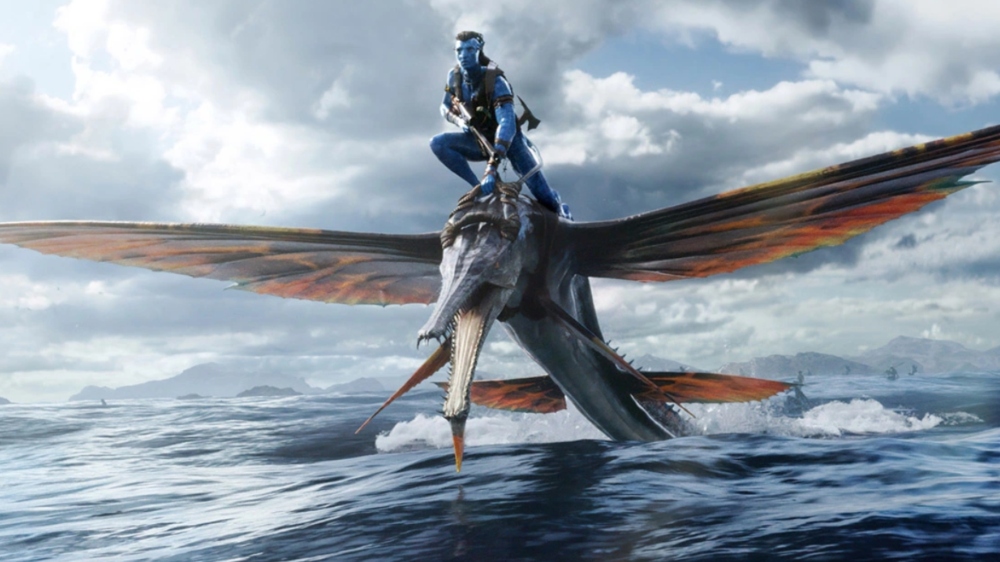
BTL: Which must mean that he trusts you implicitly.
Boyes: I believe he does, but Jon is the one that’s looking at the schedule. Jon more than calls me. He says, ‘How are we going to do this?’ Jon and I have been planning out how to make this work on the post-production side for three or four years. Early on, there was never a plan to go to Park Road. We had a good experience pre-dubbing at Skywalker, and finalizing at Fox. That worked well. Jim was able to be in one building doing his final mix, his color timing, and visual effects reviews. Everything was happening in one building, and that’s what Park Road gave us. We could have obviously also had all of that horsepower at Skywalker very easily, so it was a debate as to, ‘What if we did this? Can we do that?’ It wasn’t even, like, a call asking, ‘Hey, would you like to work on this?’ It was like, ‘Hey, how are we going to make this happen?’
BTL: The first film came out more than a decade ago. How has sound recording and the sonic experience in theaters changed between the first Avatar and The Way of Water? Atmos must play a role in it…
Yates Whittle: We have Atmos sound now, which changes the game in a big way. It gives you a lot more speakers to play with. You can abuse that, but I don’t think Jim ever does. It’s always used artistically and specifically. As far as recording and mixing and stuff, Chris used Pro Tools, and he can clearly speak well about that.
Boyes: Like Gwen said, when we did Avatar all we had was 5.1, which, in my opinion, is an absolutely beautiful format. Since then, we went to 7.1, and now we’ve gone to Atmos. Atmos, for a mixer, is a quantum more complicated to get it to sound good. It’s easy with Atmos to make the sound full and big, but to give it articulation and discrete elements that fuse together to become one is much more difficult. In some ways, the mixing process has become way more complicated, but as Gwen pointed out, I’ve always been a pretty traditional mixer. I’ve been doing this for a little while now. I love the DFC and Harrison consoles, but that’s not what we’re working on anymore in the effects world [or] on this one.
Yates Whittle: Part of the thing with Atmos and working on Pro Tools as a mixing console is, it’s more complicated, but it also allows you to be more specific. Instead of doing big pre-mixes where things are tied together, it stays. Everything stays live. If you have a complicated effect, and Jim doesn’t like that one part of that effect, you can pull it out. It’s more complicated in one way, but more specific at the same time, which works well for somebody like Jim.
Boyes: That’s a good description. In the past, we would commit impacts to one or two pre-dubs and fuse all these sounds together into a six-track pre-dub. Now we have however many live events playing, unfused. When Jim says, ‘I don’t like that impact,’ there could be six or seven components of the impact and it’s just the bright, crashy component he doesn’t like. I can go in there and affect that one element, as opposed to the overall sound. I suddenly thought to myself, “I don’t know how I do this.” In the old days, I’d redo the effect or something, but now? It’s a completely different process, and that is a good thing in the effects world. Gary felt that in the dialogue, too. It also allows the editors to be more involved in the mixing process, which I love. Gary can turn to Gwen and say, ‘Where is that?’ Gwen will say, ‘It’s on ADR 3, but do you want me to just take that percussive element out of it?’ He’ll reply with, ‘Yes, please.’ That becomes a lot more of a collaborative process.
Yates Whittle: Jim did it with the music, too. Jim would listen to this beautiful full score that came on 32 tracks, and he listened track by track. He said, ‘Let’s not use that. That’s good. Don’t use that. Let’s do that. Oh, that won’t work with the effect. Take that out.’ That specificity appealed to Jim.
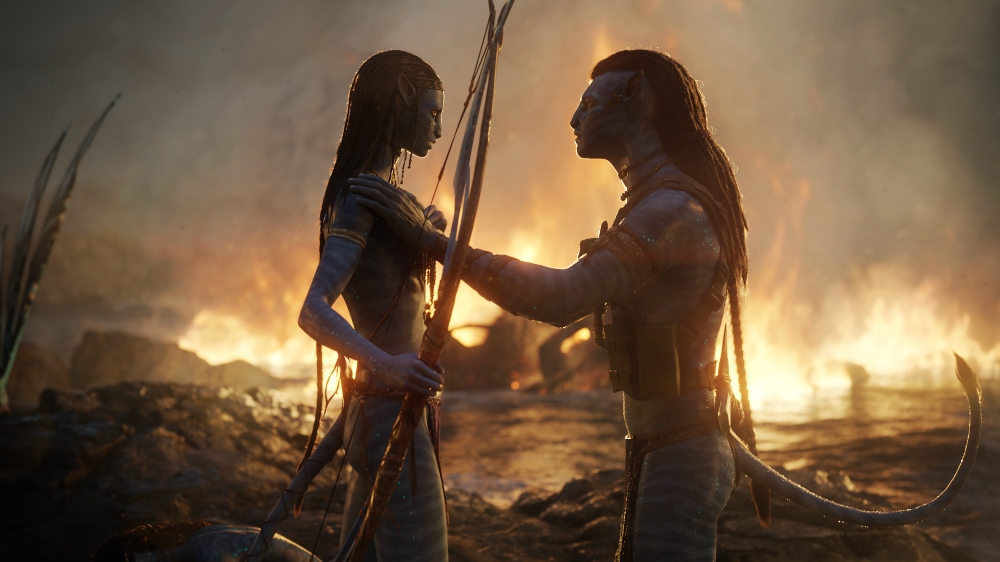
BTL: There’s no doubt an hour-long answer to this question, but please give me the two-minute version. What were some of the most challenging sounds to create for this film?
Boyes: The Tulkun dialogue, which the majority of it is attached in the film to Payakan (Kevin Dorman), who becomes as much of a character as anyone else. That was the most difficult one from a sound design perspective. We also had a lot of challenges with getting the right sound [of] the guns and [of] the Sea Dragon.
Yates Whittle: He was very specific about the water.
Boyes: That was a challenge, because Jim wanted the water to be neutral, supportive, and convey pressure and mass in a medium, but it couldn’t be — at times — very active, because it needed to sit eloquently with Simon Franglen‘s music. Therefore, it needed to achieve selling the medium but not be rhythmic or in any way moving so that it would color the music. That was a challenge. Above water, he was very specific about every wave lap and movement. I would say, in some regards, the water was more of a mixing challenge than it was a sound design challenge.
BTL: Computers can create so many different sounds now, but old-school foley is like vinyl versus CD. How did you balance when to go high tech and when to go low tech?
Boyes: We stayed low-tech the whole time. In my sound design room, I had a Moog synthesizer, which is kind of a new toy to me. I used it on Tron, but now I bought one of my own and I love to play with it. Every once in a while, I would make a cool sound and blend that into something. Quite often, it got broomed out. All of our sounds, the rockets, and the guns… Dave Chrastka, who worked with me and also did sound design, he and I traveled to Georgia, as well as Alabama, to record the guns. The aircraft? Those are all real recordings from all manner of different aircraft, mostly helicopters, during the Northern California wildfires. We lean on the organic, and we always stay there.
Now, the foley? We have this great crew at Skywalker, but just for scheduling and timing, we decided to go with Dan O’Connell at One Step Up who’s done a lot of foley for me. He did all the Pirates of the Caribbean films. I knew that Dan was going to deliver a huge amount of material and I wanted the ability to have that performed stuff. In addition to the footsteps and the movement, he also did a lot of water. I had water from the sound effects department and water from the foley department. I had to pick and choose and make it all work. It all comes from an organic world.
Yates Whittle: Jim loves foley. He’d [say] ‘I can’t wait to have the foley, to put some weight and reality to these wonderful characters.’ He was so excited by that.
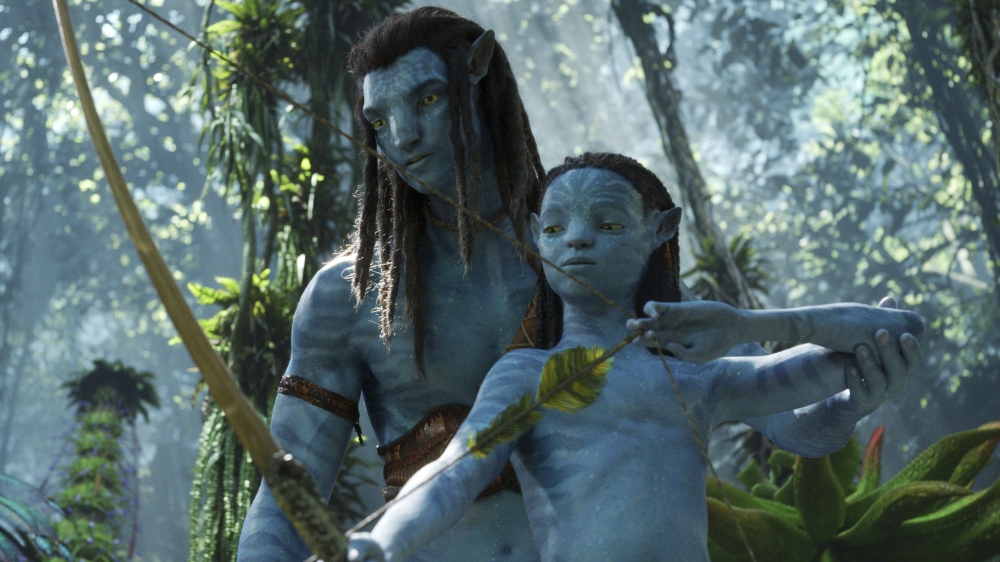
BTL: How helpful was it to you both that you’d worked with Jim for so long, specifically on Avatar, so that you knew much of the universe and had a shorthand with him?
Boyes: Hmm. Go ahead, Gwen.
Yates Whittle: Obviously, being in the forest part of Pandora, we had a palette already to create those worlds and the Na’vi people. We knew how they sounded, and the calls. When we got to the Metkayina, they were a whole different tribe with different characteristics. Clearly, the water was a thing. The vessels? Those were all new. There was definitely a vernacular that we had with Jim, but we had to expand even the forest part of Pandora because the visuals were sweetened. I don’t know a better word. With the visuals, there’s so much more clarity and detail. We also had to sweeten the way the forest part of it sounded as well. It helped that Jim trusted us, that way he could concentrate more on the visual stuff. He would say, ‘Without a picture, I don’t have a movie.’ It would have been good to have more of his attention on us earlier on. I don’t know how to go on further from this, Chris.
Boyes: The thing is, having done Avatar where there was sound for the Ikran, both their vocals and their wing flaps, Jim was very much of the opinion — and I kept having to scold my team — ‘Stop putting in new sounds. We’re only using legacy sounds where there’s already an established sound.’ He was pretty clear on that, that if there was something in the film that existed in the original, those were the sounds that we were going to use. Obviously, as Gwen said, we went to the Metkayina village. We met the Skimwing and the Ilu, which were new creatures, so the original film was of no help there. We were in new territory, with the water itself. I would say that, having done the first film, 30 percent of our knowledge was useful, but we had to develop the remaining 70 percent.
BTL: Jim is known as a tough taskmaster, yet everybody seems to work with him again and again. For both of you, what’s behind your loyalty to him and him to you?
Yates Whittle: He’s a brilliant storyteller, and he makes brilliant, beautiful, gorgeous films that people want to see. It’s always great to be part of that.
Boyes: I would say, for me, he expects sound to help tell the story. As a Sound Designer and a Mixer, there’s a compelling component in that. This man, unlike most directors these days, pours over every sound and every frame of the picture. That engagement can be terrifying as well as collaborative and fun because he values what sound brings to the picture and demonstrates it by the way he involves himself in the final mix.
Avatar: The Way of Water is still playing exclusively in theaters courtesy of 20th Century Studios.





